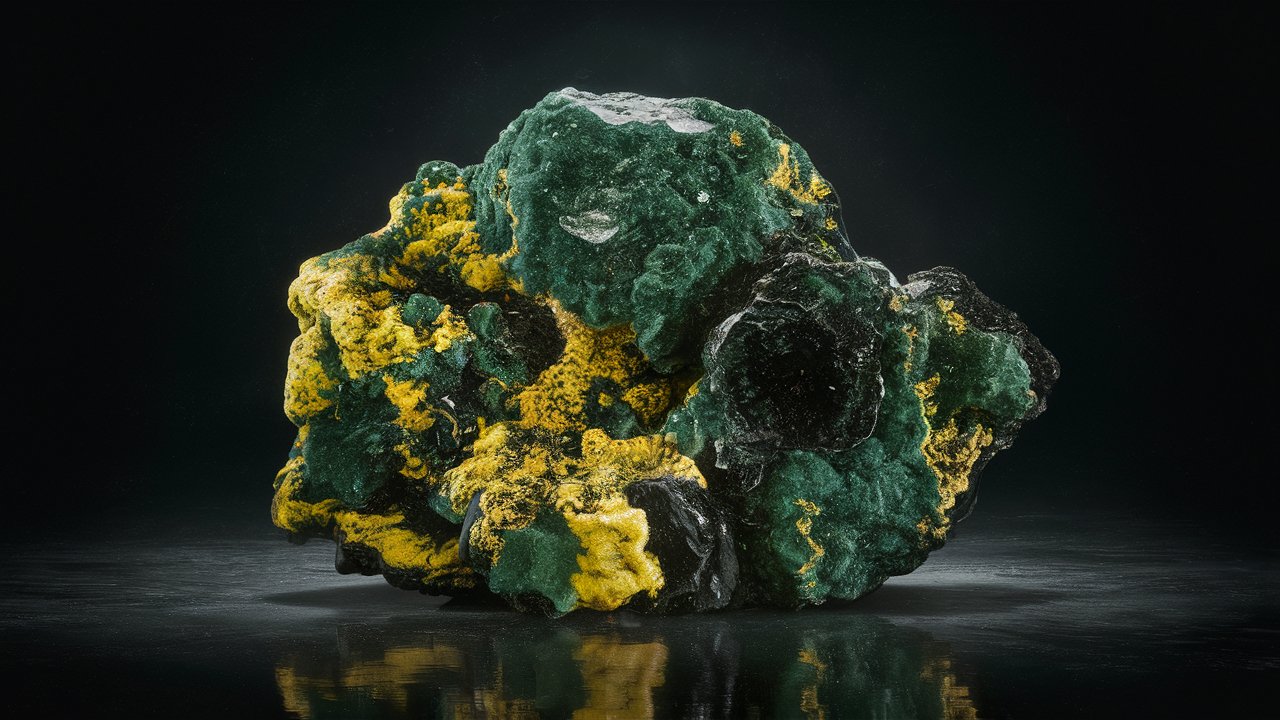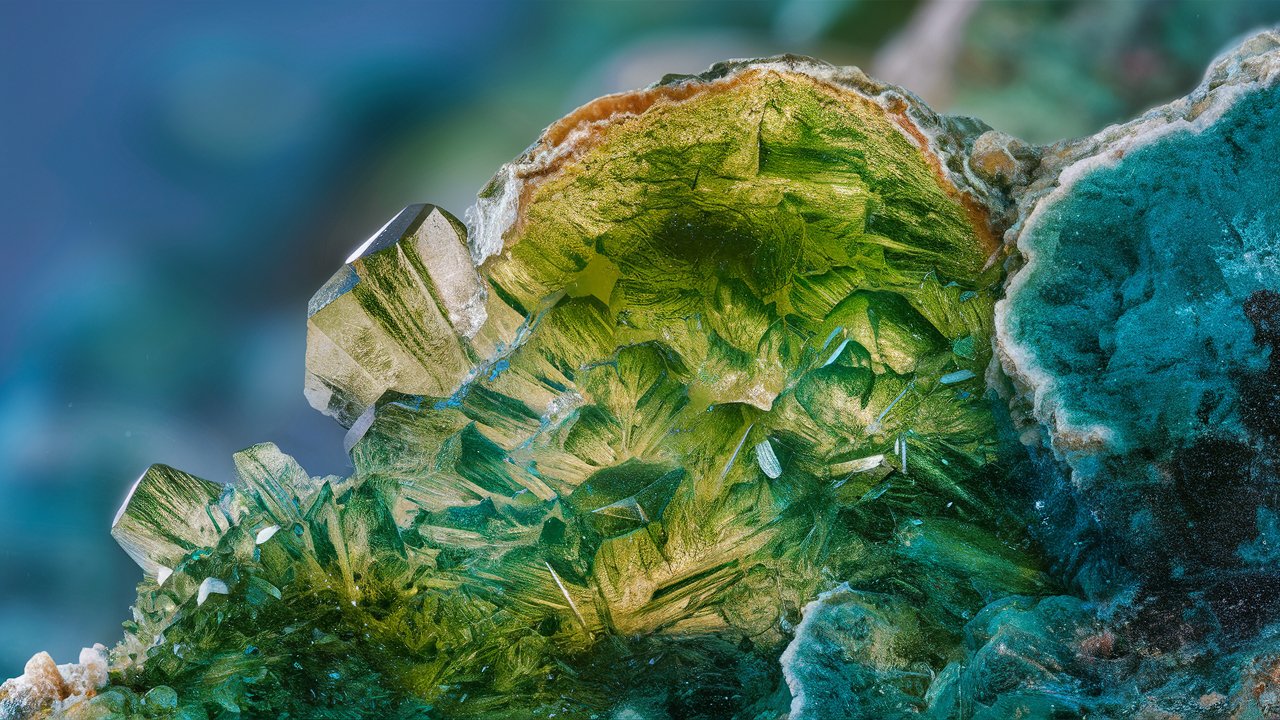
Aeschynite-(Ce) is a rare mineral that often catches the eye of geologists and collectors alike. Found in pegmatites and other igneous rocks, this mineral is known for its striking appearance and unique properties. But what exactly makes Aeschynite-(Ce) so special? For starters, it contains a mix of rare earth elements, including cerium, which gives it its name. Its crystal structure is complex, making it a subject of interest for mineralogists. Additionally, Aeschynite-(Ce) can be found in various locations around the world, from Norway to the United States. Whether you're a seasoned collector or just curious about minerals, learning about Aeschynite-(Ce) offers a glimpse into the fascinating world of geology.
What is Aeschynite-(Ce)?
Aeschynite-(Ce) is a rare, complex mineral that belongs to the broader aeschynite group. This mineral is primarily composed of cerium, a rare earth element, which gives it its unique properties and characteristics. Let's dive into some fascinating facts about this intriguing mineral.
Unique Composition
Aeschynite-(Ce) has a distinctive chemical composition that sets it apart from other minerals.
- Chemical Formula: The chemical formula for aeschynite-(Ce) is (Ce,Ca,Fe,Th)(Ti,Nb)2(O,OH)6. This complex formula indicates the presence of cerium, calcium, iron, thorium, titanium, and niobium.
- Rare Earth Element: Cerium, a rare earth element, is a significant component of aeschynite-(Ce). Rare earth elements are crucial in various high-tech applications, including electronics and renewable energy technologies.
Physical Properties
The physical properties of aeschynite-(Ce) make it a subject of interest for mineralogists and collectors alike.
- Color: Aeschynite-(Ce) typically appears in shades of brown, yellow, or black. Its color can vary depending on the specific impurities present in the mineral.
- Crystal System: This mineral crystallizes in the orthorhombic system, which means its crystals form in three mutually perpendicular axes of different lengths.
- Hardness: On the Mohs scale of hardness, aeschynite-(Ce) ranges from 5 to 6. This makes it relatively hard, similar to apatite or feldspar.
Geological Occurrence
Aeschynite-(Ce) is found in specific geological settings, often associated with other rare minerals.
- Locations: Significant deposits of aeschynite-(Ce) have been discovered in Norway, Madagascar, and the United States. These locations are known for their rich mineral diversity.
- Associated Minerals: Aeschynite-(Ce) is often found alongside other rare minerals such as euxenite, fergusonite, and gadolinite. These minerals frequently occur in pegmatites and other igneous rocks.
Uses and Applications
Although not widely known, aeschynite-(Ce) has some interesting uses and applications.
- Research: Due to its complex composition, aeschynite-(Ce) is studied by researchers to understand the behavior of rare earth elements in minerals.
- Collecting: Mineral collectors highly prize aeschynite-(Ce) specimens for their rarity and unique crystal forms. High-quality samples can fetch significant prices in the collector's market.
Environmental and Health Considerations
Handling and processing aeschynite-(Ce) require caution due to its composition.
- Radioactivity: Aeschynite-(Ce) contains thorium, which is radioactive. Proper precautions must be taken when handling or storing this mineral to avoid exposure to radiation.
Aeschynite-(Ce) is a fascinating mineral with a rich history and unique properties. Its complex composition and rarity make it a subject of ongoing research and interest in the scientific community.
The Final Word on Aeschynite-(Ce)
Aeschynite-(Ce) is a fascinating mineral with a rich history and unique properties. Found mainly in pegmatites and granitic rocks, this rare earth mineral contains elements like cerium, titanium, and niobium. Its striking yellow to brownish-black color makes it a collector's favorite.
Understanding its formation helps geologists learn more about Earth's geological processes. Plus, its presence in certain locations can indicate valuable mineral deposits nearby. While not widely used in commercial applications, its scientific value is immense.
Whether you're a geology enthusiast or just curious, knowing these facts about Aeschynite-(Ce) adds a layer of appreciation for the natural world. So next time you come across this intriguing mineral, you'll know a bit more about its story and significance.
Was this page helpful?
Our commitment to delivering trustworthy and engaging content is at the heart of what we do. Each fact on our site is contributed by real users like you, bringing a wealth of diverse insights and information. To ensure the highest standards of accuracy and reliability, our dedicated editors meticulously review each submission. This process guarantees that the facts we share are not only fascinating but also credible. Trust in our commitment to quality and authenticity as you explore and learn with us.


